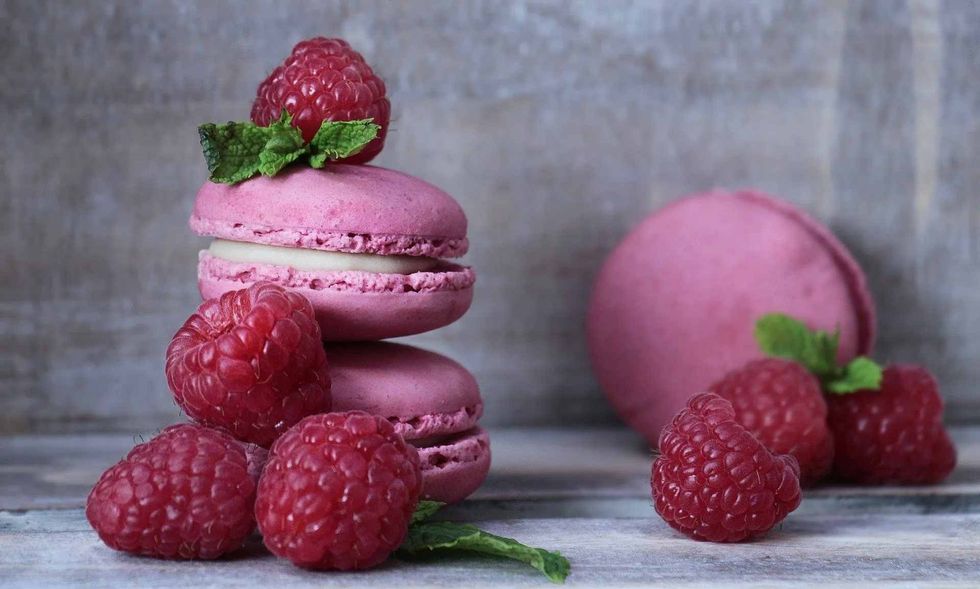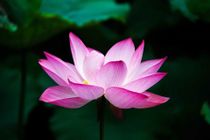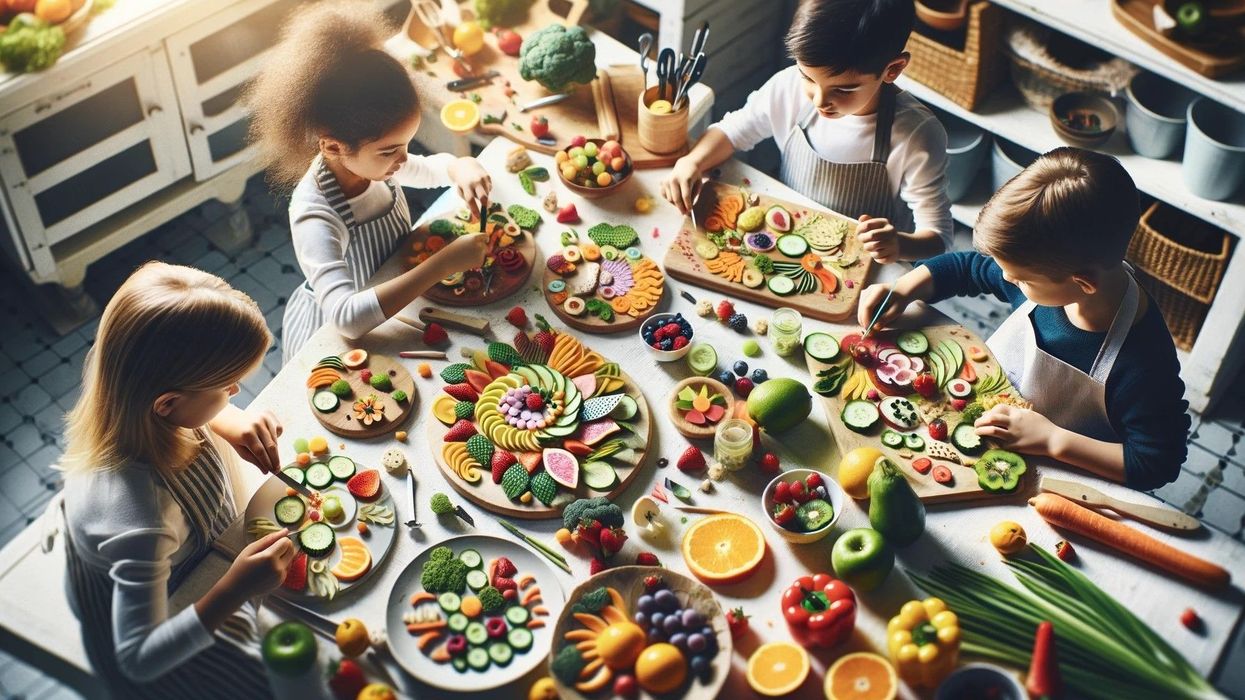What Colors Make Pink? Guide To Making This Beautiful Color

Did you know that pink was used as a shade name for the first time in the late 17th century?
Pink is a hue that exists between red and white. So, the answer to the question 'what colors make pink' is red and white.
Pink combines the passion and fire of red with the purity of white and creates a hue of compassion and devotion. For many people, pink symbolizes love, warmth, and gentleness. If you want to make different hues of pink, then try adding other bright colors to the mix to create a lighter pink shade of paint.
For many people, pink is the hue of universal love and oneself. Pink symbolizes friendly relations, love, peace, spiritual serenity, and likability.
Pink, besides purple, is a hue that appears only occasionally in nature. Many argue it does not occur as it is not a color in the noticeable light spectrum.
This point is heavily disputed, because pink color shades may be observed in nature, particularly in the flesh and exoskeleton of crustaceans such as crabs and lobsters, as well as in some flowers. It is an extra-spectral color that must be blended to create it.
Pink is given an angelic, almost manufactured appearance as a result of this. Regardless, it continues to be one of the most significant hues.
The color, however, can be associated with certain negative meanings. It can, for instance, signify a dearth of self, personality, and determination, as well as an overly sensitive and watchful personality for many people.
You might have many questions like what colors make pink, where can you use the color, what colors go with pink, different shades of pink, how is pink color obtained, and many more. Find out the answers by reading this article.
After you have read this article and understood how to make the color pink without white, read about what color is espresso and what color is indigo?
Different Shades Of Pink
Shades of pink hues are often pale or dull tones of reds, roses, and magentas produced on digital displays that use the RGB color model and in printing using the CMYK color model. That is, it is an arbitrary shade categorization as per color theory.
More than 50 different pink shades exist! You're probably wondering why all these distinct types of pink were developed in the first place, rather than simply utilizing a simple version of the color.
There is lots of research behind the usage of colors that shows that various hues, even multiple shades of the single color, elicit distinct emotions and feelings in people. Fashion houses choose colors with great thought, mainly when creating names and logos. The are many different shades of pink:
Fuchsia was first mentioned in English in 1892. Fuchsia pink is a vibrant and strong shade of pink.
For many people, it symbolizes the powerful devotion shown by sweethearts in love. This color scheme is emotive and generates strong emotions on both ends of the spectrum. If you want to choose shades of pink that will catch people’s attention, fuchsia pink is a wonderful option.
Hot pink is vibrant and can never pass unnoticed. It's bold and audacious, and it always packs a punch. Pink shades, like hot pink, are vibrant, youthful, and electrifying.
Hot pink shades are a combination of red and white, and offer a visually stunning effect in art and design. Such shades of pink are especially utilized for evening gowns, since they look brilliant on an outfit while keeping it fun.
This hue has also been utilized by top designers. Hot pink, once again, is one of the finest colors for branding since it generates of enthusiasm and optimism. Hot pink is the color of the moment in every sector.
Dark pink is the color term for a dark tone of pink that has been in use since 2001. Among different shades of pink, this is a neutral color that's neither pink nor red.
It doesn’t have much white and it’s closer to brown and orange. It's one of the greatest drape and blind options.
Shades of pink like this typically appear to be sophisticated and expensive. Darker pink tones can be used to enhance the color palettes of spaces. A darker shade of pink complements many other hues, including black, white, and grey, so indulging in excellent pink accents creates appeal.
Darker pink, on the other hand, is sometimes misinterpreted since it seems practically black. Numerous property owners avoid dark-pink colors because they are afraid it will seem too gloomy in their space, unlike colors that are close to white or gray-white.
Pastel pink is a moderate yellowish shade of pink that is redder and softer than coral pink; redder, more white and more intense than dusty pink; and redder and sharper than common peach.
For many people, this shade of pink looks mature, making it ideal for individuals who wish to look beautiful and serene. It is a gentle, more yellow hue that can be used with a variety of outfits and is one of the most popular colors right now.
This hue exudes power and refinement and pastel pink was fashionable by the mid-nineteenth century.
Light pink is another example of a popular pink. Even though the color is referred to as 'light pink', it is a somewhat darker, rather than softer, shade of pink when compared to the color pink alone.
In conventional color naming, a more precise name for this might be a moderate, pale shade of pink.
Some people feel that lighter shades of pink in home decor are a great hue with a fun vibe but can also make things easier, creating a more relaxed ambiance. It may be used a little bit in every area of a house, but it is most effective in the bedroom, lounge room, and nursery.
Have you ever seen babies' feet? Their feet are usually a shade of lighter pink.
That is the shade of baby pink. Use shades of pink like this to bring purity to your next creative project. Baby pink is a favorite hue among designers and manufacturers of children's clothing because it is seen as a reflection of childhood and purity in most western cultures.
It is a soft hue, more towards white, that is ideal for youngsters to wear. This hue is worn by kids in all parts of their clothing, including t-shirts, trousers, shoes, shorts, and belts.
Bubblegum pink borrows its name from gum. Of all the different shades of pink, this color (bubblegum pink) may be combined with other colors in an infinite number of ways. The hue, bubblegum pink, is fascinating.
It's a one-of-a-kind pink with a pleasant and cheery personality. While it seems mild and light as it has more white, it may be a lovely addition in clothes and fashion.
It has long been utilized in promotions, particularly for beauty, cuisine, clothing, and other commercial products. It is one of the most popular colors of pink. Bubblegum is also said to bring back good memories of childhood for numerous people, mainly if they grew up with all kinds of pink possessions.
2019 was the year of bright neon pink in the fashion industry. Neon pinks initially emerged in fashion in the 60s after it was made popular by tennis player Billie Jean King.
An artist who is trying to create neon pink will use complementary hues such as yellow. To make an impression with your design, mixing bright shades of pink (like neon pink) with neutral, strong colors is a great idea. It's an intriguing hue that can make a strong impact when utilized wisely in a design aesthetic.

What colors go well with pink?
Red and white paint are used to make pink paint. Pink is different from most other colors. Most colors are linked with a certain set of characteristics.
For example, red signifies love, blue symbolizes tranquility, green reflects ecology, and yellow denotes warmth. Pinks, on the other hand, have undergone several transformations over the decades.
Pink is experiencing a mini revolution these days. Pink is now a symbol of strength and defiance as the women's empowerment revolution gathers momentum. So, it is time for you to embrace this hue and make pink a part of your life as well.
In order to find which colors go well with the color pink, we have to first take a look at the primary color wheel. First, consider pink on the color wheel then find its polar opposite.
That is pink's contrasting color. They complement one another when they are put next to each other and produce symmetry and tranquility. Combining pink with its equivalent colors is one of the simplest things you can do when establishing a powerful color palette.
These are the colors to the left and right of the one you've picked, in this case, pink. You will notice that red and red-orange are equivalents of pink. When these colors are put together, they don't generate a startling impression since they are near enough in hue.
So, that's the reason why old rose, blush, and baby pink compliment each other so beautifully. Another way of seeing what colors go well with pink is the triad color scheme.
This mixes three colors that are equally separated on the color wheel. The colors pink, blue, and yellow are three examples.
Simply paint a rectangle on the wheel to use the rectangle technique. Your color palette is represented by the four edges. Pink, red-orange, blue-green, and indigo are some examples.
How is pink color obtained?
Assuming you're about to paint some artwork and want to find the ideal hue of pink, where do you even start? What color mixing needs to be done to form pink? To understand how to make pink paint, we have to know quite a lot about physics and culture.
A pink hue is made up of red and white. You can create pink paint by mixing red paint and white paint.
Diluting red pigment is also a possible way to make a pink color. Can you make pink without using white? Yes, by using a lighter yellow.
Does mixing a shade of red and yellow paint make pink? If you need a peachy pink shade, mix a small quantity of yellow to make this shade, which will lend the pink a faintly orange tinge.
If you need some bright pink, combine a small bit of blue, which will give the pink a somewhat purple, lavender or lilac tint. Add more red hue to the mix for a deeper pink.
It may require a small amount of time to make pink the right hue. Mixing more white results in bright or hot pinks, whereas mixing more red results in a deeper pink. Pink is a tint rather than a true hue.
You can make pink tints by combining any hue with white. Pink is a tint as it is a combination of red and white.
You should now understand exactly what colors combine to make pink, but what exactly is pink? Combining red paint and white paint to produce pink paint is a simplified depiction of what is essentially a rather intricate method.
Before trying to explain what pink is, we must first understand what color is. This entails learning a little something about how light functions. Fundamentally, the physical constitution of an object enables light to reflect off of it in a particular manner, resulting in color.
When all of the colors reflect off of an object, it looks white. If no light is reflected then something will appear as black.
However, an item generally has another hue, such as blue, red, or green, which is really the wavelength of light that is mirrored by the object. Light wavelengths are calculated in nanometers.
The 'visible spectrum' refers to the range of light that people can perceive without the assistance of technology. Red, a main constituent of pink, has a wavelength of about 700 nanometers, making it one of the longest wavelengths that we can perceive.
Pink, on the other hand, is not a commonly existing wavelength of light. It consists of red, which occurs naturally, and white. So, what two colors combine to form pink?
Whenever wavelengths that equal 700 nm (red) are combined with white, you will get pink. To make pink, a combination of red and blue light wavelengths is needed.
Pink Color Combinations
So, what colors match with pink? Although most variations of pink can fit, flatter, highlight, or underplay almost any color palette according to how you arrange them, there are still some hues and layouts that can make the pink look extra stylish:
Pink and black is one of the most popular color combinations. When combined with pink, black has a powerful, dramatic, and dark effect, and it may produce richness and dimension.
A bright and brilliant pink may appear to be a daring option, but, when combined with black, it really comes together. Pinks in lighter hues work well with black as well. The combination of black and softer pink provides a lovely mix of harsh and delicate, deep and bright.
Pink and teal used to be interpreted by some people as a silly combination. However, there are now numerous dramatic and stunning ways of mixing these two beauties.
The stronger the impact, the hotter the pink. The same is applicable for teal, a shade of blue-green. Utilizing these vibrant, vivid tones in a usually bland environment creates energy and paints things as more interesting and fun.
Pink paint goes well with subdued colors like gray, specifically shades of grays which are soft, peaceful, and neutral. Pink and a shade of gray work very well together, generating a mix of a pleasant and homely atmosphere. Gray is a shade that has little influence on its own, meaning that it's a fantastic foundation to work on.
Pink and red is another color combination that, when selected properly, makes a good pairing. Pink and shades of red are excellent together.
Pink combined with a warm shade of red is a fiery, vibrant, and powerful mix of tones that work well together. A vibrant pink and scarlet color scheme provides a mix of a fun and opulent atmosphere that is warm and cozy.
Pink and blue may be utilized together to create a lively home environment. Vibrant pink and warm blue shades have a strong stimulating impact. Deep tones create a luxurious, comfortable atmosphere in a space. Pink paint contrasted with little lighter blue shades may bring all the components together in a mild or neutral atmosphere.
Here at Kidadl, we have carefully created lots of interesting family-friendly facts for everyone to enjoy! If you liked our suggestions for what colors make pink then why not take a look at another article such as what color is cayn, or what color is carbon.
We Want Your Photos!
More for You
See All
Bachelors in Business Administration

Aashita DhingraBachelors in Business Administration
Based in Lucknow, India, Aashita is a skilled content creator with experience crafting study guides for high school-aged kids. Her education includes a degree in Business Administration from St. Mary's Convent Inter College, which she leverages to bring a unique perspective to her work. Aashita's passion for writing and education is evident in her ability to craft engaging content.
Disclaimer
1) Kidadl is independent and to make our service free to you the reader we are supported by advertising. We hope you love our recommendations for products and services! What we suggest is selected independently by the Kidadl team. If you purchase using the Buy Now button we may earn a small commission. This does not influence our choices. Prices are correct and items are available at the time the article was published but we cannot guarantee that on the time of reading. Please note that Kidadl is a participant in the Amazon Services LLC Associates Program, an affiliate advertising program designed to provide a means for sites to earn advertising fees by advertising and linking to Amazon. We also link to other websites, but are not responsible for their content.
2) At Kidadl, we strive to recommend the very best activities and events. We will always aim to give you accurate information at the date of publication - however, information does change, so it’s important you do your own research, double-check and make the decision that is right for your family. We recognise that not all activities and ideas are appropriate for all children and families or in all circumstances. Our recommended activities are based on age but these are a guide. We recommend that these ideas are used as inspiration, that ideas are undertaken with appropriate adult supervision, and that each adult uses their own discretion and knowledge of their children to consider the safety and suitability. Kidadl cannot accept liability for the execution of these ideas, and parental supervision is advised at all times, as safety is paramount. Anyone using the information provided by Kidadl does so at their own risk and we can not accept liability if things go wrong.
3) Because we are an educational resource, we have quotes and facts about a range of historical and modern figures. We do not endorse the actions of or rhetoric of all the people included in these collections, but we think they are important for growing minds to learn about under the guidance of parents or guardians.







